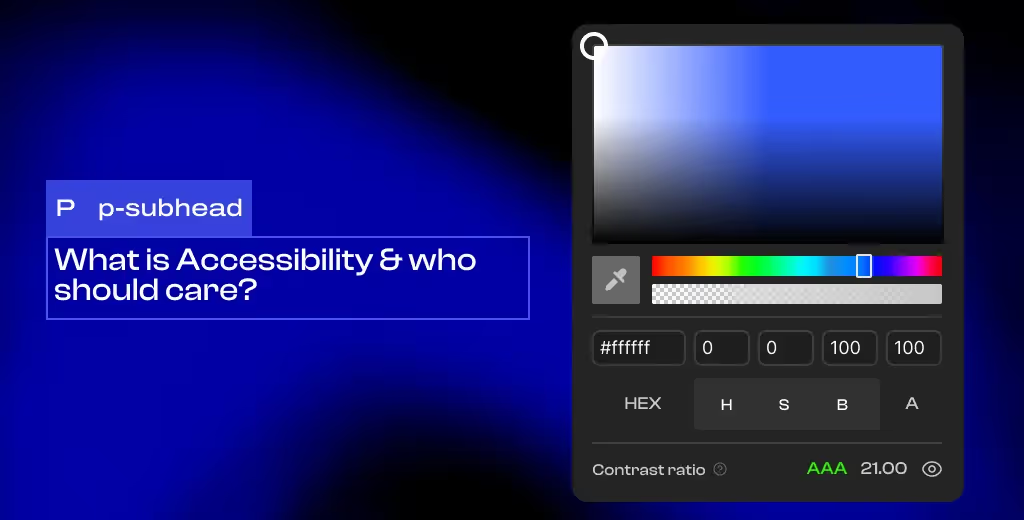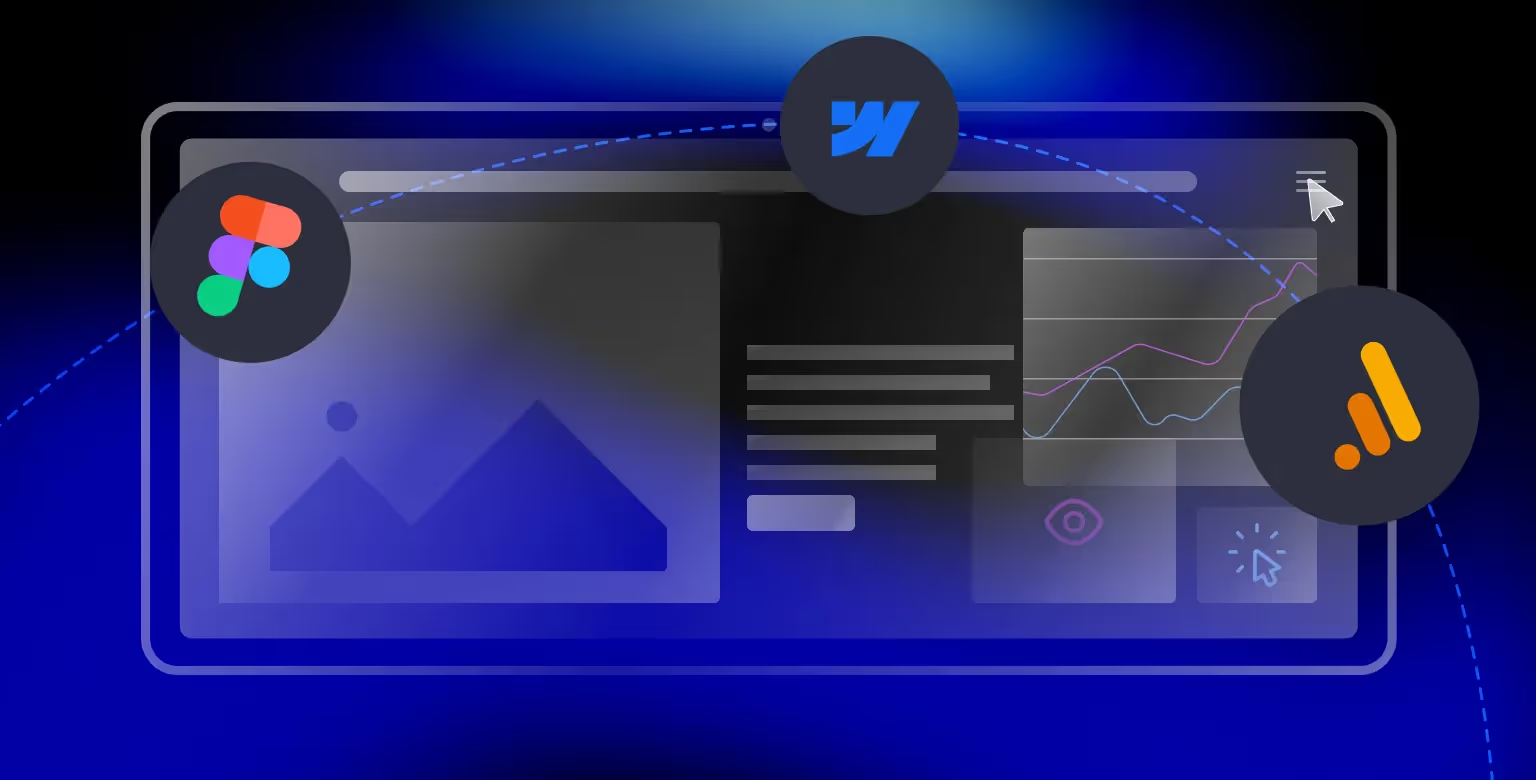You never get a second chance to make a first impression. Nowadays, users form opinions about your website in a matter of milliseconds.
In fact, studies show that it takes just 50 milliseconds for users to form an opinion about your website, and 94% of those first impressions are design-related.
That's right - your website's design is the face of your brand online, and it plays a crucial role in shaping user perception, building trust, and ultimately driving conversions. Even though social media profiles can introduce your brand, they lack the full control and credibility a website provides — our website vs social media guide highlights why a well-designed site remains vital for your marketing success.
But, web design is much more than just aesthetics. It's a fundamental component of your overall marketing strategy, influencing everything from SEO and lead generation to brand building and customer engagement.
That is why web design and marketing have a connection that you should never overlook.
In this blog post, we'll dig deeper into how web design impacts your marketing efforts and explore the key elements that contribute to a successful online presence.
Web Design as the Foundation of Your Online Presence
Your website is the first place potential customers go to learn about your brand, explore your offerings, and ultimately decide whether to engage with your business.
Just like a physical storefront, your website needs to make a positive first impression, convey professionalism, and provide a welcoming and engaging experience for visitors. For ideas on how to make your website feel cozy and inviting while maintaining professionalism, see our article on how to make a website look cozy.
This is where web design comes into play. It's the foundation upon which you build your online presence, shaping user perception and influencing their interactions with your brand.
Visual elements like layout, color scheme, typography, and imagery all work together to convey your brand personality and create a cohesive brand identity.
For example, a tech startup might opt for a sleek, minimalist design with bold typography and vibrant colors to convey innovation and dynamism.
On the other hand, a law firm might choose a more traditional design with classic fonts and a muted color palette to project trustworthiness and stability.
Beyond aesthetics, web design plays a crucial role in user experience (UX). An intuitive navigation menu, clear calls to action, and a responsive design that adapts to different screen sizes all contribute to a positive user experience. For content-rich websites, implementing a well-structured mega menu can ensure users find what they need quickly. Explore Mega Menu Examples from top brands for inspiration.
When visitors can easily find what they need and navigate your website seamlessly, they're more likely to stay engaged, explore your offerings, and ultimately convert into customers.

How Web Design Impacts Key Marketing Goals
Web design isn't just about creating a pretty website, it's a powerful tool that directly influences your marketing efforts.
Let's explore how web design impacts key marketing goals.
SEO (Search Engine Optimization)
Search engines like Google prioritize websites that offer a positive user experience. They want to serve up results that are relevant, informative, and easy to navigate.
While web design doesn't directly encompass all aspects of technical SEO, it plays a significant role in creating a user-friendly website that search engines will favor.
- Web Design’s Impact on Technical SEO: Many aspects of web design influence technical SEO. For instance, large image files or inefficient code can slow down your website, negatively impacting your search engine rankings. By optimizing images, streamlining code, and prioritizing a fast-loading website, designers contribute to improved technical SEO and a better user experience.
- User Engagement: A well-designed website keeps visitors engaged, encouraging them to explore more pages and spend more time on your site. This positive user experience signals to search engines that your website is valuable and relevant, further boosting your SEO.
If you need help ranking your website high in Google, or other search engines, explore how our SEO agency for tech startups will be able to help.
Lead Generation
Your website is a powerful lead-generation tool, and its design can significantly influence your ability to capture leads and convert them into customers.
- Strategic Placement of Forms and Calls to Action: Web design allows you to strategically place lead capture forms and calls to action throughout your website, guiding visitors towards desired actions, such as signing up for a newsletter, downloading a resource, or requesting a quote.
- Landing Page Design: Landing pages (LPs) are specifically designed to convert visitors into leads. A well-designed LP with a clear message, compelling visuals, and a strong call to action can significantly improve your lead-generation efforts. To learn what makes a strong landing page, read our article home page vs landing page.

Brand Building
Your website is often the first touchpoint for potential customers, and its design plays a vital role in shaping their perception of your brand.
- Consistent Design Elements: Consistent use of design elements, such as your logo, color scheme, and typography, across your website, creates a cohesive brand identity, reinforcing brand recognition and recall.
- Visual Storytelling and Brand Messaging: Web design allows you to tell your brand story through visuals, messaging, and overall website experience. By crafting a compelling narrative and communicating your brand values effectively, you can build a strong brand identity and foster a deeper connection with your audience.
In essence, web design is an integral part of your marketing strategy, impacting your ability to attract organic traffic, generate leads, and build a strong brand presence.
Web Design Trends that Enhance Marketing Strategies
Here are a few key web design trends that align with marketing goals:
- Minimalist Design: In a world of information overload, minimalist design offers a breath of fresh air. By stripping away unnecessary elements and focusing on essential content, minimalist websites improve clarity, reduce distractions, and guide users toward desired actions.
- Interactive Elements: Interactive elements, such as animations, micro-interactions, and dynamic content, can significantly enhance user engagement and increase time spent on site.
- Personalization: Personalization is becoming increasingly important in web design. By tailoring the user experience based on individual preferences, behaviors, or demographics, you can create a more relevant and engaging experience.
- Accessibility: Accessible web design ensures that your website is usable by everyone, including people with disabilities. This not only expands your reach to a wider audience but also demonstrates your commitment to inclusivity.
For AI brands, staying ahead of web design trends is equally important to ensure complex solutions remain user-friendly and credible.

The Ongoing Relationship Between Web Design and Marketing
Web design is not a one-time effort, it's an ongoing process that requires continuous monitoring, analysis, and optimization. Your website is a living entity that needs to adapt and evolve to meet the changing needs of your audience and the ever-evolving digital landscape.
Website analytics tools such as Google Analytics and Microsoft Clarity provide valuable insights into how users interact with your website, revealing which design elements are working effectively and which areas need improvement.
A/B testing is another powerful technique for refining your web design. By creating two versions of a page with slight variations in design elements, you can test which version performs better in achieving your marketing goals. If you're interested to see how your designs can increase the profitability of your business, explore the services of our Conversion rate optimization experts.
Final Thoughts
Web design is not merely an aesthetic concern, it's a vital component of a successful marketing strategy. As such, the link between web design and marketing needs to be on top of your mind once you start building your online presence.
Invest in professional web design to elevate your online presence and achieve your marketing goals. Partnering with a trusted Web Design Agency like Tilipman Digital ensures your website is built to maximize impact and performance. Contact us today for a free consultation or to get a quote for your web development project.




